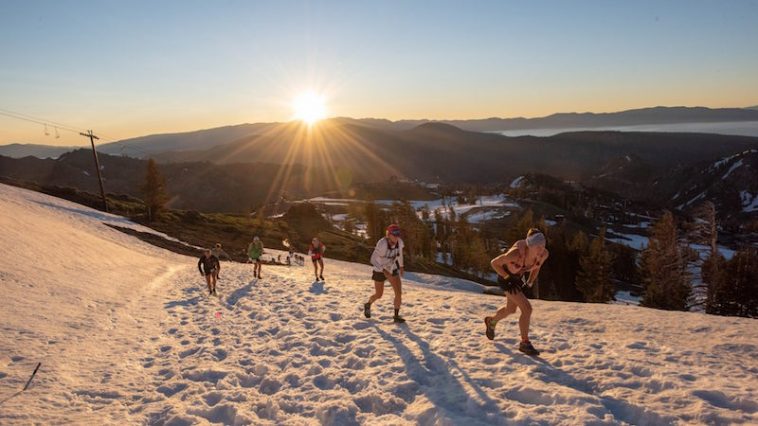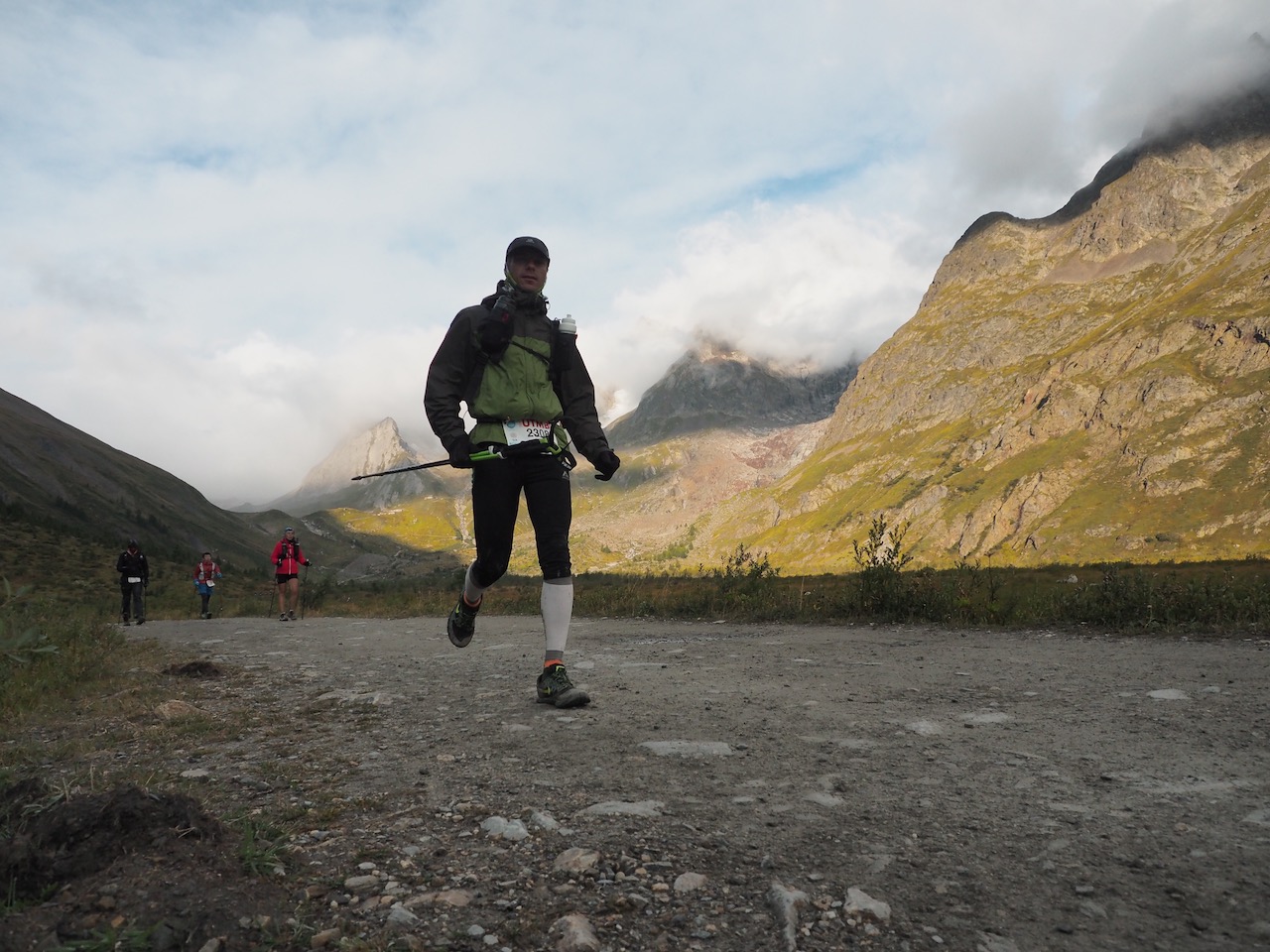The 47th edition of the Western States, in California, the oldest 100-mile race in the world, was to take place this weekend, June 27-28. Canceled due to the COVID-19 pandemic, the legendary race that trail runners from all over the world dream of, is taking advantage of this year’s break to consolidate and restructure. Distances+ goes back in history with the Western States race director, Craig Thornley, who has been at the helm of the organization for the past eight years.
A week before race day Craig has been feeling even more deeply what the cancellation of his event meant. « It’s real now. It has been my new normal for months that there would be no Western States, but now that it is approaching, it is starting to become … let’s say, disheartening, » he confided. The cancellation of the Western States was announced on March 27th, exactly three months ago.
Even if the deconfinement is progressing and some trail races are still taking place in the United States this summer, it would have been impossible to have held the event in these conditions this year, he believes. « Health regulations in the region have started to loosen up and businesses have reopened, but the number of people affected by COVID is on the rise, » said the race director. « The masks have just been made compulsory in public places by the Governor of California, whereas until now, people have not been paying much attention to it. They were not wearing masks and were trying to resume a normal life. »

A different year
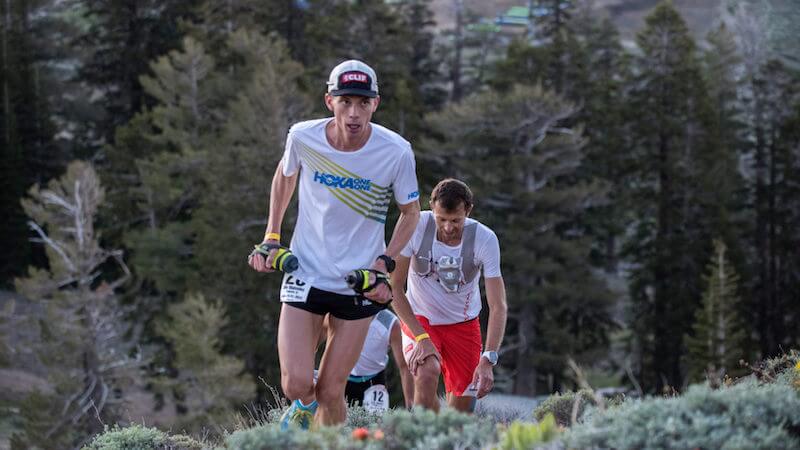
If the organization hasn’t worked on the realization of the 2020 edition for dozens of weeks, the team is far from sitting idly by. « We are not wasting this time that we have. We are implementing changes that the public won’t necessarily notice, for example in the way we operate and regarding our status, there are big structural changes to come for our organization which has been around for 47 years now, » underlines Craig.
The Western States team also took advantage of the situation to do some trail cleaning work. « Even if the race isn’t taking place this year, runners still come to train on the Western States course. This is a good thing, because it shows that we are cleaning the trails for the community and not only when our race is happening » he explains.
Keep in mind that the Western States crosses the Sierra Nevada Mountains from Squaw Valley to Auburn, California, on a route previously used by western American gold miners.
Like many other races that have been canceled since the start of the pandemic, the Western States team is also participating in a virtual race organized by one of their sponsors, the « 100 miles to Auburn. » Participants have the whole month of June to accumulate 100.2 miles, a challenge in which more than 2000 people signed up, much to the amazement of Craig who himself wore the t-shirt for this virtual challenge during the interview .
A big financial impact
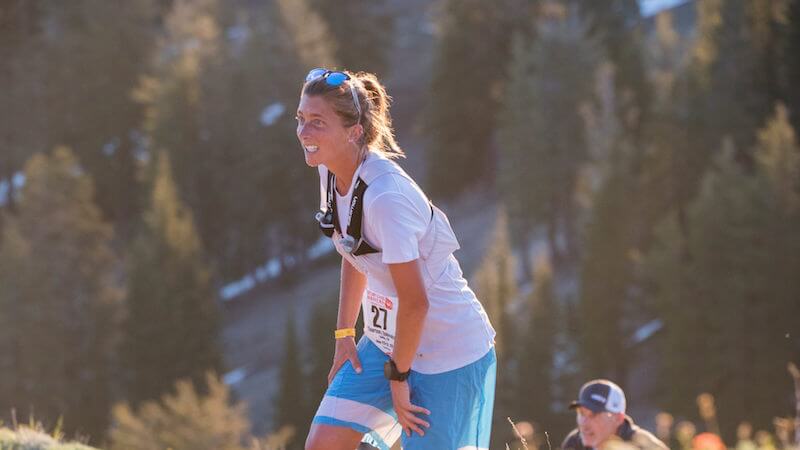
If the organization wants to turn things around as positively as possible, the fact remains that COVID has seriously impacted the organization’s finances. With only 369 registrants, all of whom have chosen to postpone their registration to 2021, it only means that the organization is losing a full year in registration revenues.
They had also chosen to offer a very generous cancellation policy, allowing 100% reimbursement. « We are particularly proud of our cancellation policy. We did not want to make money with the situation and we wanted to be sensitive to the needs of athletes in the context of COVID. Some have lost their jobs and we wanted those who needed this money to be able to recover their US $ 410, » explains the race director.
Craig noted that the biggest impact of canceling his race is undoubtedly for the runners who wish to participate in the event. 6664 people participated in the lottery for 2020. Some of them have been applying for several years. Failure to host the event in 2020 will add another year to the chance of running the Western States. « It’s really sad for all those people who are waiting to be able to take part in the race one day, » said Craig.
Financially, they could have received some government support, but they preferred not to turn to this option. Judging that their backs were fairly strong after all these years of experience, and that other organizations in their community were in more trouble this year, they preferred to give them the opportunity to apply for the available grants.
To compensate for the significant financial loss, they were authorized to add five additional seats for the 2021 edition of the race, spots they used to raise new revenue by selling raffle tickets to bypass the official Western States lottery.
Adding spots is really exceptional for the Western States, since the number of runners has been limited by government authorities since 1984, when the California Wilderness Act was promulgated, legislation that created the Granite Chief Wilderness, a protected and wild area that crosses the Western States. As the race pre-existed this legislation, it obtained the acquired right to welcome each year the number of participants that there were at the date of the creation of the Granite Chief Wilderness, that is to say 369, but not one more.
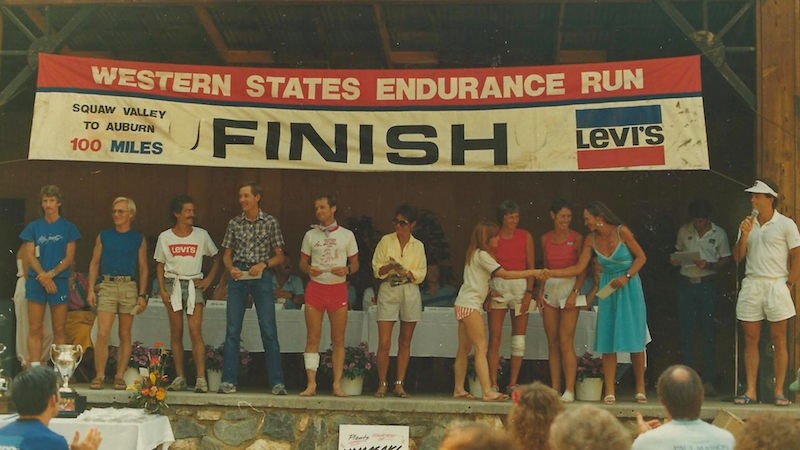
« The rules are very strict in protected areas in the United States, » says Craig. « It’s a good thing, because it helps conserve natural habitats and protect them from human activities, but let’s say it makes everything more complicated when it comes to organizing events like ours, » he said. It also means that there can be no races in the most beautiful areas of the United States, like the Yosemite Valley or Kings Canyon, he notes.
More than 250 people bought raffle tickets for a total of US $ 40,000 in new income that the organization was able to raise to get through this difficult financial year. The lucky fives will be made known this Saturday, June 27, via a live draw on Zoom, by Jim Wamsley and Clare Gallagher, winners of the 2019 edition. Anybody was able to buy a ticket for the draw, however in order to be allowed to toe the start line it will be necessary to qualify for the race, or otherwise transfer it to another runner who will qualify.
As for the concept of a paid raffle, Craig confesses that it is something that has always existed. Each year, such paid draws are organized. But this is the first time the organization has really promoted it. This time, runners from all over the world bought tickets, while the raffle usually drew people from the local community, who signed large checks to support the organization.
The second cancellation in 47 years
This is the second time the race has been canceled since its inception in 1974. The first time was in 2008, when California experienced major forest fires all over the territory. That year the cancellation was announced only a few days beforehand, the Wednesday before the race, which was particularly difficult since the majority of the expenses had already incurred and many runners were already on site.
« It was a really different cancellation. This year, we have had so much time to plan and adapt. We didn’t spend a lot of money three months leading to the event, » said the head of the organization for the Western States since 2012, after having been his predecessor Greg Soderlund’s assistant for a year.
An unexpected career
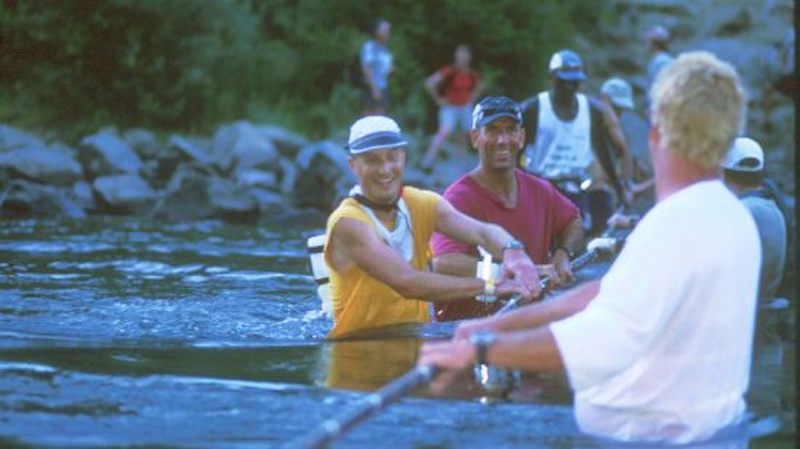
Like the majority of race directors, Craig had not planned to hold this title. A graduate in computer science, he has always been passionate about trail running and endurance racing, with more than a hundred races under his belt to this day.
It was in 1978 that Craig first learned about the race. He had just moved to the area with his family, more specifically at the end of mile 85 of the race course. He was standing by the river with his brother when they saw runners passing by, asking them where the next aid station was. « I had no idea what they were talking about! So we camped there and we saw runners pass by throughout the whole night, ”says Craig, who was 14 years old at the time and still far from imagining how much the Western States would be a part of his life.
It was after putting together a new race in the early 2000s, the Waldo 100k, on a voluntary basis and just for fun, that his wife pointed out to him that he had a certain talent for managing these types of events.
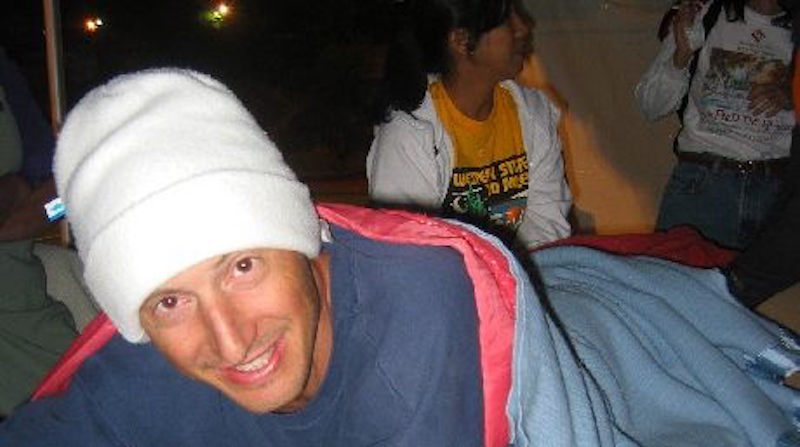
« I never really thought about it until the job offer for the Western States came up, » admits Craig. I’ve always been a big fan of the Western States. I volunteered at one of the aid stations for ten years, I paced, I was in support teams and I had run the Western States eight times before becoming the race director, » discloses the one who even ran the legendary 100 miles in 2017, while ensuring his role of race director, a challenge he found particularly demanding.
There is a special belt buckle given to those who complete the Western States ten times, Craig is dreaming of the day when he can cross the finish arch for the tenth time. « I have this tenth participation that hangs over my head and that I dream of doing, probably when I am old and retired, » he laughs.
An authentic race
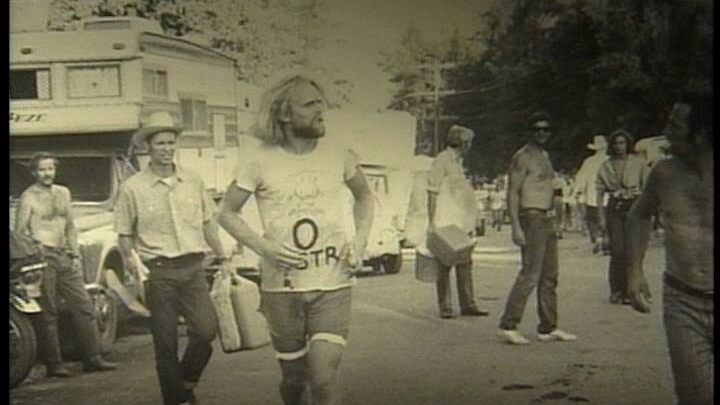
The race has kept a lot of its essence for the past 47 years, observes Craig. Certain things have of course changed, in particular the course itself which had to be modified due to a few property rights of the territories crossed that have changed over time. But in general, the organization has stayed true to itself and kept a lot of its values and spirit.
Craig also laughs when he thinks back to the medical protocols that were in place when the race first made its debuts. « In its first few years of existence, teams relied on their experiences with horses » he recalls, mentioning that the race was first and foremost a race that was carried out on horseback. « Of course, the animals cannot express how they are feeling, so their health had to be monitored throughout the race, » he said.
When the event became a running race, after Gordy Ainsleigh proved in 1974 that it was possible to perform the test on foot (and in less than 24 hours!), the medical teams used the same protocols on foot participants. « For example, they forced runners to sit down to take their blood pressure and pulse, which obviously didn’t do much good, » said Craig, amused.
For a long time, the race also remained at a very regional level. There were the occasional runners from abroad, but it was very rare. They even reserved 25 spots for runners from abroad for many years to ensure a certain participation from the international crowd, said Craig Thornley.
In 2001, the year it was first drawn, there were only 500 people who had applied for the lottery. During the first two years, he was able to participate relatively easily in the event.
Today, the competition can not only fill its participant capacity with outside runners dozens of times, but it has also been part of the Ultra-Trail World Tour (UTWT) since 2013.
« At the beginning, our main motivation to be part of the UTWT was to have a seat around the table, as trail running started to take on an increasingly international dimension. We wanted to contribute to this development through our values, our ideas. We wanted to play a role in developing the discipline globally, » says Craig.
Today, he appreciates being able to meet, thanks to this important network, race directors from all over the world. « I can call any race director and ask them anything I want. I have this amazing network, which is good for us, of course, but also for others. I have a lot more people calling me than me calling them, » he acknowledges, amused.
Amazing memories
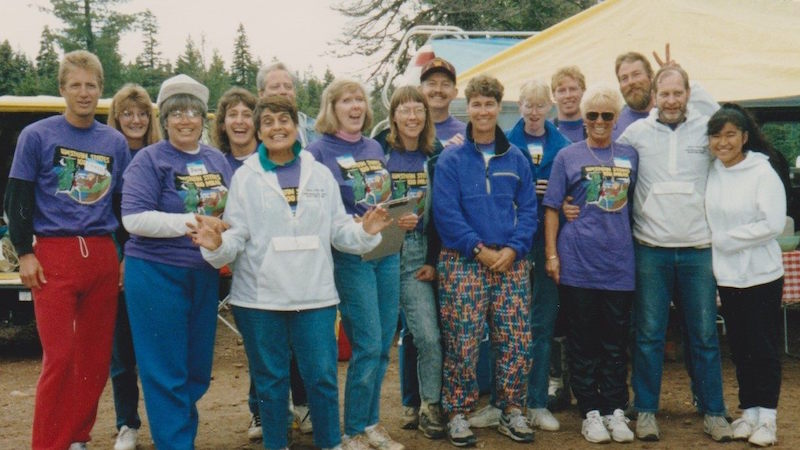
The best moment Craig has had as race director for the past eight years is definitely the arrival of Gunhild Swanson in 2015, he says. The then 70-year-old had crossed the finish line only 6 seconds before the 30-hour time barrier. She became the oldest graduate in the history of racing. « It was a very emotional moment, » he recalls. « Rob Krar, who had won the race, was there to accompany her for the last mile. It was the most publicized moment of the event to date. It was really, really special. »
After this emotional year, three more runners finished after the 30-hour time barrier the following year, including Wally Hesseltine. 72-year-old Wally tried in 2016 to become the oldest runner to complete the Western States, only to cross the finish line in 30:01:56, which did not allow him to be recognized as a finisher of the event.
« It broke our hearts,» recalls Craig. « But that’s also what makes the 30-hour time barrier meaningful. If this rule is not strictly observed, stories like that of Gunhild would lose their meaning, » explains the race director.
The latter hopes to continue this profession for as long as possible. « If I get to the point where I feel like I’m not bringing anything new to the organization and the race, I will step aside to make room for newer, younger guys. Otherwise, as long as I stay motivated, I hope to continue. » says Craig Thornley.
Of course, he’s already starting to dream about the 2021 edition and the gathering of the running community that he misses terribly. « It is really sad to not be able to get together this year, with our participants and more than 1,500 volunteers. We now must focus on 2021 and the fact that we will all get to see each other again next year, » he said.
Trason, Jurek, Jornet, Walmsley, Dauwalter…
In the past 20 years the legendary American runner Scott Jurek has won the Western States seven times in a row, from 1999 to 2005. Timothy Olson won it twice (2012 and 2013), Canada’s Bob Krar twice as well (2014 and 2015), just like the defending champion Jim Walmsley, who broke the event record in 2018 (14:30) and 2019. Last year, he achieved an incredible time: 14:09 to cover 160 km and 5200m of elevation gain. Before him, the record was held by Krar in 14:48, almost 40 minutes longer than the Flagstaff rocket. Note that Kilian Jornet won the Western States in 2014.
For the women, the historic feat belongs to the American Ann Trason who won the event 14 times between 1989 and 2003. But it is a Briton who holds the record, Ellie Greenwood, double winner of the WSER (2011 and 2012), in 16:47. An incredible performance with regard to the women’s field since the fastest time has rarely gone below 18:00 in the history of the race. In the recent years, Pam Smith, Stephanie Howe, Magdalena Boulet, Kaci Lickteig, Cat Bradley, Courtney Dauwalter and Clare Gallagher have all respectively won the event. In 2019, Courtney Dauwalter was on track for the record when she was stopped by severe pain that forced her to DNF.
Translation : Caroline Beaton

